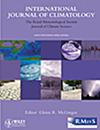Copula-Based Approach to Nonstationary Bivariate Frequency Analysis of Short-Duration Precipitation Extremes in Huaihe River Basin, China
Abstract
The risk of extreme rainfall events has increased due to climate change, necessitating the risk assessment of extreme rainfall events under a nonstationary framework. Since short-duration extreme rainfall events are more sensitive to environmental changes, and the current research on the risk of continuous short-duration extreme rainfall events is insufficient, this study presents a methodological framework for assessing the risk of short-duration rainfall extremes using a nonstationary model across the Huaihe River Basin in China from 1963 to 2015. The methodology includes the following components: (1) A quantile-based approach was used to identify the short-duration extreme rainfall events. (2) The risk of short-duration extreme rainfall events caused by climate change was calculated using nonstationary bivariate models and compared with those from stationary models. (3) The design values corresponding to the most-likely design event at different average annual reliability (AAR) were calculated based on copula models. The results illustrated that the intensity of rainfall duration and total rainfall of short-duration extreme rainfall events in most stations increased significantly after 2000. The width of the 90% confidence interval for the design values estimated based on AAR increased under both nonstationary marginal distributions and nonstationary copula models, indicating that the calculation of the design values will be affected in both scenarios. Therefore, it is necessary to use nonstationary bivariate models to assess the risk of short-duration extreme rainfall events under climate change. Overall, this study provides a systematic framework for conducting nonstationary risk assessments of short-duration extreme rainfall events.


 求助内容:
求助内容: 应助结果提醒方式:
应助结果提醒方式:


